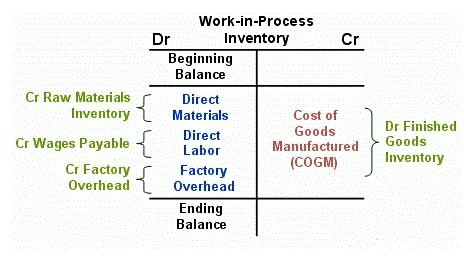
Accrued expenses occur when a company records an expense for purchasing an asset but does not have to pay for it until the next period. Expenses are recorded at the time they are incurred, not when they are paid. For example, a company might record a substantial expense in Q4 but not have a cash outlay until the next year when the invoice is paid. As a result, the company might post a net loss in Q4 while maintaining a positive cash position. Income recognition has significant ethical implications, as it can impact the distribution of profits among stakeholders, affect tax liabilities, and influence investment decisions. Ethical considerations require transparent and accurate income recognition practices.

liabilities.
If a company sells an asset or a portion of the company to raise capital, the proceeds from the sale would be an addition to cash for the period. As a result, a company could have a net loss while recording positive cash flow from the sale of the asset if the asset’s value exceeded the loss for the period. To keep track of revenues and expenses, it is most efficient to develop a set of accounts with which to do this.
Warning Signs and Methods for Detecting Manipulations
Income recognition is an area where there is a potential for income manipulation. This can occur when a company intentionally uses an income recognition method that results in a more favorable financial picture. Under the cash basis method, revenue is recognized only when cash is received. This method is simpler to use, but it can lead to a distorted view of the company’s financial performance. The process of looking for the expenses corresponding to recognized revenue is called matching.
- Their net effect will be transferred into Retained Earnings in what is called a closing entry.
- A negative net income means a company has a loss, and not a profit, over a given accounting period.
- Cash flow is reported on the cash flow statement, which shows where cash is being received and how cash is being spent.
- Net income is calculated by subtracting the costs of doing business, including expenses, taxes, depreciation, and interest on debt from total revenue.
- A cash flow to earnings that is consistently below 1 might be a signal of heavy use of accrual accounting.
Learning Accounting
- Yes, there are times when a company can have positive cash flow while reporting negative net income.
- Ethical considerations require transparent and accurate income recognition practices.
- A company can still post a loss in its daily operations but have cash available or cash inflows due to various circumstances.
- If a company uses the cash basis method to recognize revenue, it will not recognize revenue from a sale until the cash has been received.
- While a company may have positive sales, its expenses and other costs will have exceeded the amount of money taken in as revenue.
Cash flow is the net amount of cash and cash equivalents being transacted in and out of a company in a given period. If a company has positive cash flow, the company’s liquid assets are increasing. Net income is the profit a company has earned, or the income that’s remaining after all expenses have been deducted. Net income is commonly referred to as the bottom line since it sits at the bottom of the income statement. Cash flow is reported on the cash flow statement, which shows where cash is being received and how cash is being spent. If a company has positive cash flow, it means the company’s liquid assets are increasing.

Income recognition can be manipulated through aggressive revenue recognition practices, such as recognizing revenue prematurely or deferring expenses. The concept of net income recognition revolves around the timing of revenue recognition, which profoundly influences the reported net https://www.bookstime.com/ income. Various income recognition methods exist, each with its own nuances and applications. Understanding these methods and their impact on net income is crucial for stakeholders seeking accurate and reliable financial information. A negative net income means a company has a loss, and not a profit, over a given accounting period. While a company may have positive sales, its expenses and other costs will have exceeded the amount of money taken in as revenue.
Can a Company Have Positive Cash Flow and Negative Net Income?
This phenomenon, imbued with far-reaching implications, warrants a thorough examination to unravel its intricacies and discern its impact on financial reporting and business decision-making. Yes, there are times when a company can have positive cash flow while reporting negative net income. But first, we’ll need to explore how cash flow and net income relate to each other in the financial viability of the company. An increasing trend of accounts receivable could indicate that a company might be lowering its credit issuance restrictions to generate more sales. This, unfortunately, could affect the ratio of uncollectible debt and result in low earnings quality.
Recent Posts
Net Income is an increase in an entity’s net assets resulting from its operations over a https://www.facebook.com/BooksTimeInc/ period of time. If an entity’s operations over a period of time result in a decrease in its net assets, this entity has recorded a Net Loss. Depreciation is an accounting method that allocates the cost of a fixed asset over its useful life. Depreciation accounts for declines in the value of the asset and spreads the expense of it over the years of the useful life of that asset.

An example of time-related manipulations is expenses capitalization, which would decrease the expenses of the current period and distribute the cost over several upcoming periods. Location-related manipulations could be made through misallocation of losses i.e. by deducting them from other comprehensive income or even by deducting them directly from equity rather than net income. Expenses are the assets used or liabilities incurred in the process of carrying out operations.

Real-World Example of Positive Cash Flow and Negative Net Income
When analyzing a company’s financial statements, it is important to review all aspects of the company’s financial position, including net income and cash flow. Only through a comprehensive net income recognition always increases: analysis of all the financial statements can investors make an informed decision. Remember that the cash flow statement only shows a company’s cash position. A company can still post a loss in its daily operations but have cash available or cash inflows due to various circumstances. The choice of income recognition method is influenced by factors such as the nature of the transaction, the industry in which the company operates, and the applicable accounting standards.

